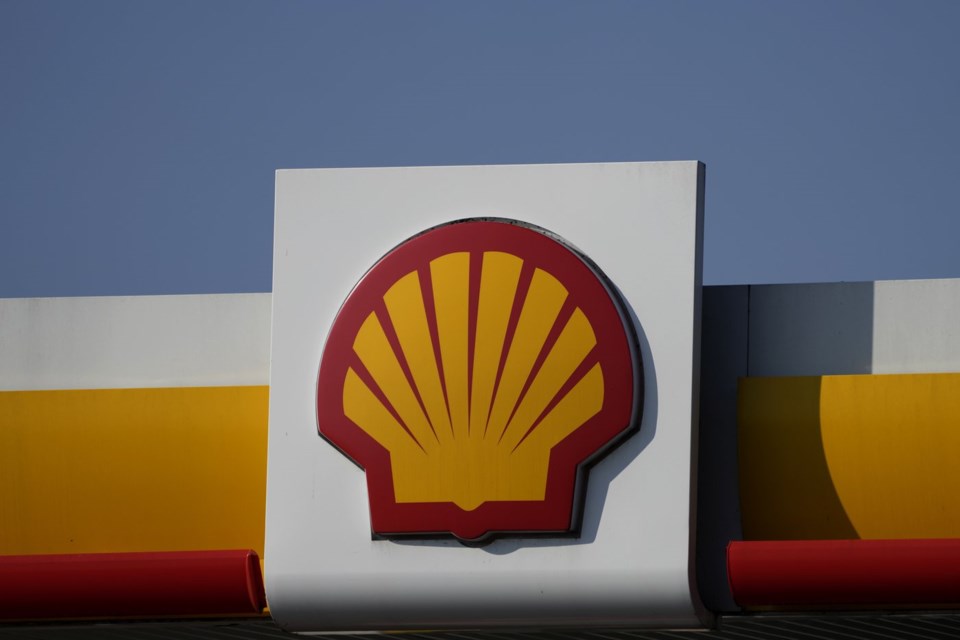CALGARY ŌĆö Shell sa╣·╝╩┤½├Į is going ahead with its Polaris carbon capture project in Alberta.
The company ŌĆö the Canadian subsidiary of British multinational Shell PLC ŌĆö announced Wednesday it has made a positive final investment decision on the project, which is designed to capture up to 650,000 tonnes of carbon dioxide annually from the Shell-owned Scotford refinery and chemicals complex near Edmonton.
That works out to approximately 40 per cent of Scotford's direct CO2 emissions from the refinery and 22 per cent of its emissions from the chemicals complex.
Shell did not disclose the dollar value of the Polaris project, but said it is expected to begin operations toward the end of 2028.
"It's a very good day, it's an exciting day for us," said Shell sa╣·╝╩┤½├Į president Susannah Pierce in an interview.
"Certainly for me as country chair of sa╣·╝╩┤½├Į, it's great to see this capital investment from Shell in sa╣·╝╩┤½├Į. Because as you know, I compete for capital in my portfolio, and I'm pleased that Shell has decided to put it here."
Shell also said Wednesday it will proceed with the related Atlas Carbon Storage Hub in partnership with ATCO EnPower. The first phase of Atlas, which will be connected to the Polaris project by a 22-kilometre pipeline, will provide permanent underground storage for CO2 captured by Polaris.
Polaris is Shell's second carbon capture and storage project in sa╣·╝╩┤½├Į. Its first, named Quest, was completed in late 2015 and is also located at the Scotford complex.
That project ŌĆö which cost $1.3 billion to build ŌĆö has captured and stored about nine million tonnes of CO2 from the Scotford upgrader since 2015, Shell said.
Shell's decision to greenlight the Polaris project comes just days after a new federal investment tax credit for carbon capture and storage received royal assent.
That tax credit was first announced in 2022, but its finalization means that companies can now apply for and claim the credit to offset the capital costs of building carbon capture facilities.
"That was a critical component of the (Polaris) decision," Pierce said.
There has been a flurry of carbon capture proposals in sa╣·╝╩┤½├Į in recent years, though few have received a final investment decision.
Carbon capture and storage, which involves capturing and compressing harmful CO2 emissions from industrial processes and then storing them safely underground, is viewed by many as the best way of decarbonizing heavy-polluting industries such as oil and gas and cement production.
But the technology is very expensive and corporations have proved reticent to invest in it without significant support from governments.
The largest proposed carbon capture project in sa╣·╝╩┤½├Į, a $16.5-billion proposal by a group of oilsands companies called the Pathways Alliance, has yet to receive a final investment decision.
Earlier this spring, Edmonton-based Capital Power Corp. cancelled plans for its proposed $2.4-billion carbon capture and storage project at its Genesee natural gas-fired power plant. Capital Power said while the project was technically feasible, the economics didn't work.
Pierce said every project is different, but in Shell's case, Polaris is a "key piece" of the company's overall decarbonization strategy.
"We have a commitment to decarbonize our Scotford facility, we have experience in CCS (carbon capture and storage) with our years of operating the Quest facility," she said.
"With the right combination of a fiscal framework as well as regulation, we were able to take a look at CCS compared to any of the other alternatives to meet our compliance obligations, and this one worked."
In addition to the federal investment tax credit, Pierce said the Polaris project can take advantage of a range of existing and proposed federal and provincial programs, regulations, and incentives.
These include Alberta's carbon capture incentive program, the federal clean fuel regulations and the Alberta Technology Innovation and Emissions Reduction regulation which allows companies that have reduced emissions to generate credits that can be saved or sold to other emitters.
In a report Wednesday, global consultancy Wood Mackenzie said it projects carbon capture and storage will represent a US$196-billion investment opportunity worldwide over the next decade.
About 70 per cent of that investment will take place in North America and Europe, Wood Mackenzie said.
"The expected pace of CCUS deployment will be driven by the level of regulation and support in different countries," the report said, adding the U.S. and sa╣·╝╩┤½├Į have "robust" regulatory and funding mechanisms in place to drive implementation.
"Announced government funding specifically for CCUS across key countries ŌĆō including the U.S., sa╣·╝╩┤½├Į, the U.K., Denmark and Australia ŌĆö amounts to around US$80 billion," Wood Mackenzie said in its report.
"The U.S. leads funding with a 50 per cent share of the total, followed by the U.K. at 33 per cent and sa╣·╝╩┤½├Į at 10 per cent."
Federal Environment Minister Steven Guilbeault told reporters in Ottawa on Wednesday he expects carbon capture and storage to account for seven to eight per cent of sa╣·╝╩┤½├Į's overall emissions reduction efforts by 2030 ŌĆö making it part of a "portfolio" of technologies that this country will need to deploy to achieve its international climate commitments.
ŌĆ£IŌĆÖve always said that carbon capture is one of many solutions to fight climate change," Guilbeault said.
"If you look at our emissions reduction plan, carbon capture will play a role, but itŌĆÖs not a silver bullet.ŌĆØ
- With files from Alessia Passafiume in Ottawa
This report by The Canadian Press was first published June 26, 2024.
Companies in this story: (TSX:CU, TSX:ACO.X)
Amanda Stephenson, The Canadian Press



